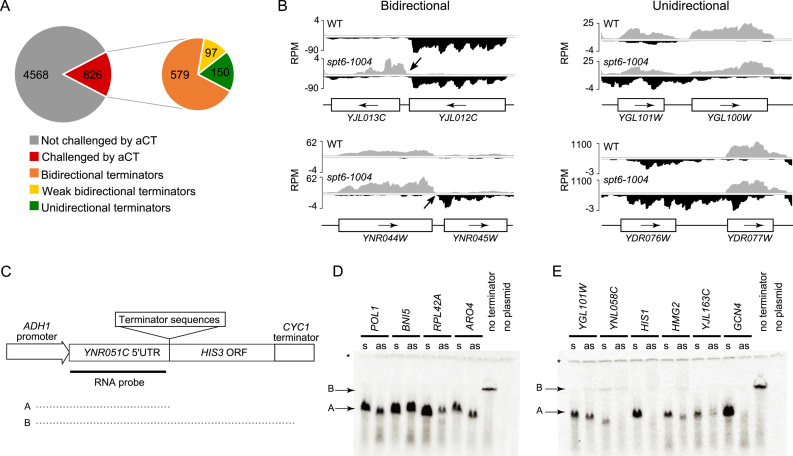Figure 4.
Yeast terminators are mostly bidirectional. (A) Pie charts displaying the terminators that are challenged by antisense cryptic transcription (aCT; left) and the number of bidirectional, weak bidirectional and unidirectional terminators (right). (B) Genome-browser snapshots illustrating examples of bidirectional (left) and unidirectional (right) terminators. RNA-Seq signal on the Watson (gray) and Crick (black) strand are shown. (C) Schematic representation of the terminator assay used in panels D and E. (D) RNA blot for the terminator assay testing terminators predicted to be bidirectional (s, terminator cloned in sense orientation; as, terminator cloned in antisense orientation). (E) Same as ‘D’ but for terminators predicted to be unidirectional. Note that the full length transcript is undetectable in this assay, most likely due to its instability. The ‘asterisk’ indicates the transcript from the endogenous YNR051C gene and is used as a loading control. These experiments have been performed three to seven times (depending on the terminator tested) and showed consistent results. The membranes shown here are representative results. More replicates are shown in Supplementary Figure S6.

